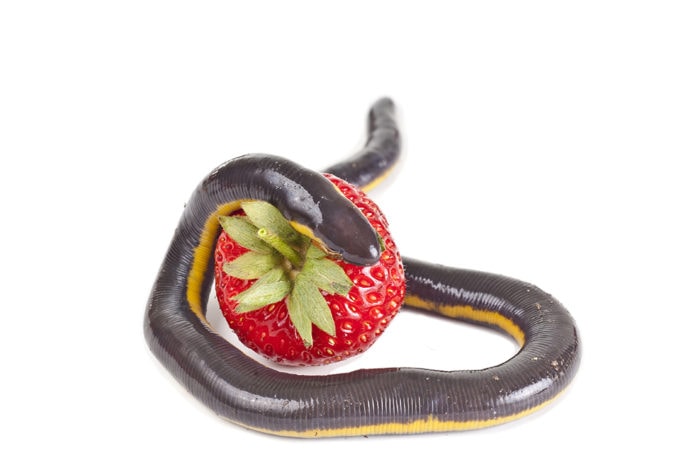Caecilians are weirdly adorable?

Bec Crew
Bec Crew

BUT WHEN you look into those small, flesh-covered eyes and try to make out that faint hint of a smile on the caecilian’s smooth, blunt head, there’s something there, right?
We can’t all be adorable like monjons, expressive like the crucifix frog, or smart as a whip like the black-breasted buzzard. Sometimes the world just needs a blind, tentacled, and surprisingly toothy dirt noodle.
So let’s take the time to appreciate the awesomeness that is the caecilian (pronounced “seh-SILL-yen”), a worm-like organism from the tropics of Southeast Asia, South and Central America, and Sub-Saharan Africa.
1. Not a snake, not a worm – something else entirely
Oddly enough, caecilians are amphibians, which means they might look like earthworms, but they’re more closely related to frogs and salamanders. But they have one thing that their cousins lack: tentacles.
The only tentacled amphibians on Earth, caecilians use the retractable fleshy projections between their eyes and nostrils to seek out prey. They’re also the only amphibians known to reproduce exclusively through internal insemination.
Get ready for it, folks, because we’re about to discuss caecilian penises.
2. Phallodeum pandemonium
Caecilians have a long, penis-like appendage called a phallodeum, which is inserted into the female’s cloaca during copulation. And this process of sperm transfer is serious business – it typically takes a good 2 to 3 hours to complete.
While some species of caecilian lay eggs, most are viviparous, which means they give birth to live offspring. And here’s when things get really creepy.
3. Mum’s flesh on the menu
Some caecilian species engage in a little-studied behaviour called ‘skin feeding’, where newly born babies use specialised ‘skin scraping’ teeth to pull at their mother’s nutrient-laden flesh to fatten themselves up.
Once they’ve peeled her clean over the course of about a month, the babies will fight over any leftover skin scraps until they’re strong enough to go out on their own. Mother of the year?
4. Eyes vs mouths
Some caecilians have eyes hidden under their skin, while others are completely blind. But what they lack in eyes, they make up for in jaws. Caecilians have two sets of muscles that they use to open and close their jaw. This helps them to keep their mouths firmly shut as they burrow underground.
Caecilians send most of their lives underground, which is why they don’t have a whole lot of use for their eyes. It’s also why there’s still a lot we don’t know about caecilians – it’s tough to study something you can’t see!
Incidentally, here’s a caecilian cuddling a strawberry. Why? Who cares!

(Image credit: kamnuan/Shutterstock)
5. Australian caecilians?
Sadly, Australia missed out on caecilians. But our neighbours in Southeast Asia, including Indonesia and Vietnam, got them, so experts like Dr Jodi Rowley from the Australian Museum and UNSW has to travel to get shots like this:
Now, if that face hasn’t convinced you of the caecilian’s odd charm, how about a catchy tune? We challenge you to not get this ridiculous song stuck in your head:




